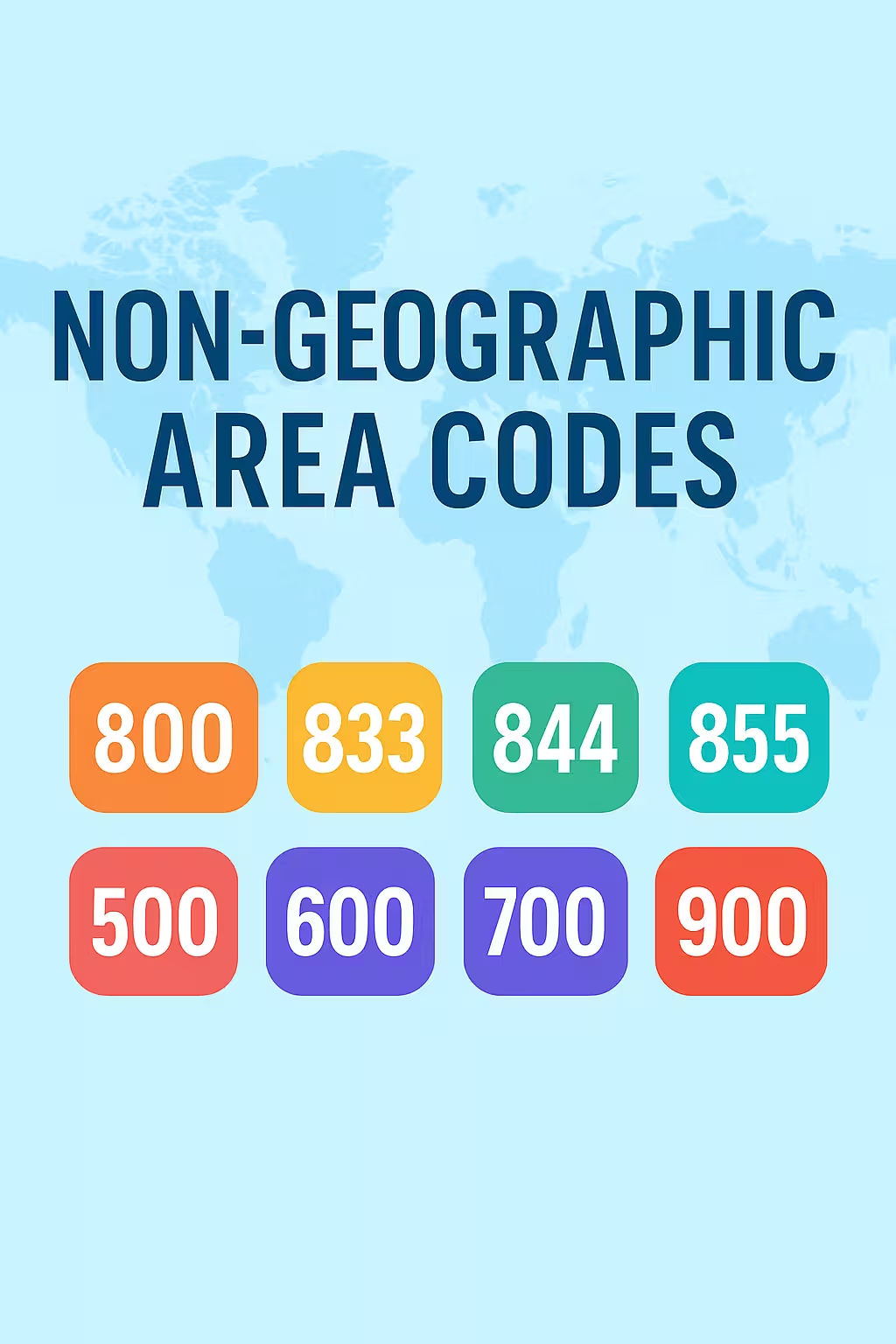
Understanding Non-Geographic NANP Area Codes: What They Are and How They Work
Non-geographic area codes are a unique subset of the North American Numbering Plan (NANP), designed to serve special purposes beyond the traditional geographic boundaries that define most area codes. Unlike standard area codes that are tied to specific states, provinces, or territories in the U.S., Canada, and other NANP member countries, non-geographic area codes are not associated with any particular region. They play a crucial role in modern telecommunications by supporting toll-free calling, premium services, satellite communications, and more.
In this article, we will explore what non-geographic area codes are, why they exist, how they are used, and which specific area codes fall under this category.
📞 What Are Non-Geographic Area Codes?
Non-geographic area codes are telephone codes under the NANP that are not tied to a specific location. Instead, they are assigned based on the type of service they are intended to support. These area codes are often used for:
- Toll-free services (e.g., customer support lines)
- Premium-rate numbers (e.g., information or entertainment services)
- Personal communication services (PCS)
- National or corporate hotlines
- Machine-to-machine communications
🌎 The Role of NANP in Numbering
The North American Numbering Plan (NANP) is the standardized telephone numbering system for 20 countries and territories including:
- The United States
- Canada
- Parts of the Caribbean
- U.S. territories like Guam, Puerto Rico, and the U.S. Virgin Islands
A typical NANP phone number follows the format NPA-NXX-XXXX, where:
NPAis the area codeNXXis the central office codeXXXXis the subscriber number
🧾 List of Non-Geographic NANP Area Codes
✅ Toll-Free Area Codes
These allow customers to call businesses or services free of charge:
- 800 – The original toll-free code since 1966
- 888, 877, 866, 855, 844, 833 – Later additions due to demand
- 822 – Reserved for future toll-free expansion
✅ Premium-Rate and Specialized Services
- 900 – Premium-rate services (entertainment, adult content, etc.)
- 500 – PCS (Personal Communication Services) numbers
- 700 – Carrier-specific long-distance services
✅ Other Services
- 600 – Specialized services (satellite, pagers)
- 710 – Reserved for U.S. government and emergency use
💡 Benefits of Non-Geographic Codes
- 📍 Nationwide accessibility
- 📞 Free customer support numbers
- 🔄 Flexibility for telecom carriers
- 🔒 Secure communication lines for critical services
🚨 Be Aware of Scams
Some non-geographic area codes — especially 900 and spoofed 800 numbers — are targets for scammers. Always verify unknown callers and avoid sharing personal information unless you’re sure of the source.
📚 Conclusion
Non-geographic NANP area codes are essential for modern, scalable communication across North America. Whether it’s calling a toll-free number or managing a national network, these codes serve critical roles in business and government communications.
🔍 Related Resources
Written by AreaCodeMaps.com — your guide to area codes across the U.S. and Canada.